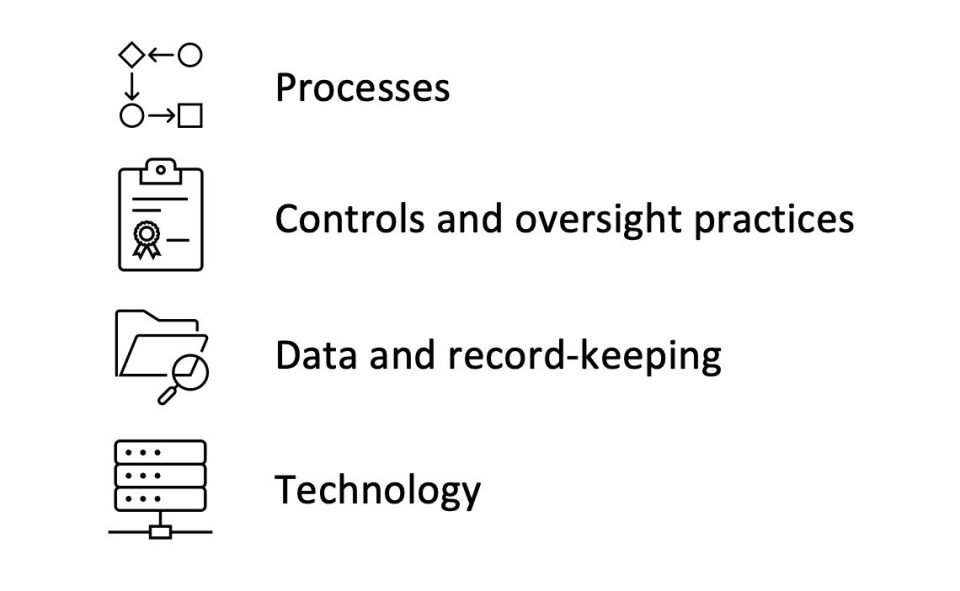
Recent Failures in General Insurance Underwriting and Pricing in Australia: Considerations to Improve Pricing Risk Management – Part Two
Join us in the second article of this series as we explore the practical considerations for improving risk management and controls in underwriting and pricing.
Since the release of the first article earlier this year, ASIC has released their report, “When the price is not right: Making good on insurance pricing promises” [1] outlining the pricing failures identified by general insurers after the review of general insurance pricing practices and the improvements required to fix them.
The review found significant consumer harm resulting from the pricing failures, which has led to general insurers remediating over $815 million to more than 5.6 million consumers.
As a result, ASIC expects general insurers to make improvements relating to product governance, design and delivery of pricing promises, honouring loyalty promises, and monitoring and supervision.
The upcoming sections explore the key considerations to reduce the chances of similar issues recurring in the future, namely:

Processes
Products become more complex over time for various reasons. A product created several years ago may have:
- Features added or removed over time;
- Customisation for different groups of customers and intermediaries; and
- Workflows and technology processes supporting the customer journey which may have had incremental complexity introduced over time.
As such, it is important to set up robust processes to ensure risks are adequately managed.
Most larger insurers have frameworks for underwriting, pricing, and product development. Often, the focus of these frameworks is to ensure good technical outcomes from an underwriting profitability perspective.
Existing frameworks often miss the link to customer experience, customer outcomes, customer disclosures and compliance requirements. Given recent regulatory scrutiny into insurers’ pricing practices in Australia, it is a good opportunity to review these frameworks and see what mechanisms should be introduced to increase collaboration between underwriting, pricing, technology, distribution, product, customer, marketing, and compliance functions.
Processes should also be introduced to govern how ad-hoc changes are made. For example, a process for manually adjusting premiums by an intermediary may be designed correctly, but an ad-hoc adjustment could lead to unintended consequences. Accordingly, good processes to ensure multi-disciplinary oversight before roll-out should be encouraged.
Controls and oversight practices
While there are several root causes for recent failures in underwriting and pricing, a majority of the issues are due to unintentional oversight and unawareness of risks which eventually became material and significant. This leads to the question, how insurance professionals are empowered to sense blind spots and increase the chances of catching and dealing with emerging issues early?
We note the importance of collaboration with multi-disciplinary experts, with perspectives from consumer, compliance, ethics and other lenses, to complement traditional technical skills in pricing, actuarial, technology, finance, underwriting, product, or marketing. Cross-functional collaboration is a vital part of enhancing the product value chain.
A culture that encourages different team members to voice concerns should be accepted and encouraged. There should be clear accountabilities of people across the insurance value chain so that different stakeholders are clear on their individual and collective responsibilities. Some interactions may require formalising, for example, via committees, as a mechanism for governance and oversight.
Typically, monitoring reports in insurance pricing and underwriting functions tend to monitor technical measures, including business volumes, underwriting risk, and profitability. There is room to further strengthen monitoring by tracking the extent to which reviews of different portfolios, business rules and customer disclosure documents are up-to-date. This can be incorporated into existing Design and Distribution Obligations[2] and product governance. Automated reporting can be developed to test issues that have occurred in the past, such as those identified during the “find” phase of recent ASIC instigated reviews of pricing practices[1].
Data and record-keeping
A critical ingredient in any process is data. More specifically, data quality. Having incorrect information about a customer flowing into the process for calculating their premiums can lead to poor outcomes for both the customer and the insurer. Data governance processes should be introduced to ensure data integrity when collecting data from customers and sourcing data from internal or external systems. Functions across the product lifecycle should have a reasonable understanding of how key data items impact pricing, marketing, and customer outcomes.
Insurers need to establish effective practices for maintaining records, including promises to customers, underwriting and pricing decisions, and key information that leads to a particular pricing outcome. The record-keeping process should be regularly reviewed to maintain relevancy and up-to-date records.
Technology
Technology is rapidly transforming the insurance practice, and it could significantly improve pricing risk management. The role of technological advancements in enhancing underwriting and pricing risk management is twofold.
Firstly, technology can free people from tedious manual tasks, so insurance professionals can focus on more important and valuable work. For example, there is increasing popularity of end-to-end pricing solutions in recent years. These solutions often feature automated rating deployment. The deployment of updated underwriting rules, premium rates, and rating algorithms can be time-consuming with outdated technology. Today, new pricing solutions allow users to complete these tasks with several simple clicks.
Secondly, modern technology provides a more effective toolkit that can be used to enable better risk management. The product lifecycle includes many sub-processes that are managed by various teams. The complex nature of each process and the interactions between different teams often lead to risk management challenges, including but not limited to:
- Access control
- Authority delegation
- Maintenance of data and codes
- Transparency of process
- Traceability of data and model usage or
- Auditability of tasks.
These challenges are particularly pronounced when functional teams use different tools in various sub-processes.
However, the latest developments have brought about considerable improvements. Pricing teams can now collaborate on the same platform and manage all inputs and outputs in centralised repositories. Audit trails can be automatically generated to monitor and record key pricing actions. And users can easily trace the usage of a dataset or a model across the entire organisation.
Technology itself is certainly not the complete answer to all challenges. However, there is no doubt that technological advancements will change the appearance and redefine better practices relating to underwriting and pricing risk management. The capabilities delivered by technological advancements are becoming the cornerstone upon which whole insurance operations are being modernised.
Next steps
Insurers have their own unique set of challenges and each insurer is at different levels of maturity with respect to underwriting, and pricing practices. Insurers need to consider their individual circumstances on how different controls and approaches to risk management apply to them.
The ASIC-initiated review of general insurance pricing practices has offered an opportunity for insurers to thoroughly assess and evaluate their ways of working and approach to the management of underwriting and pricing risk, encouraging meaningful changes to their operating environments and safeguarding customer trust.
Acknowledgement
The authors would like to thank Bhrajna Kalaiya for her valuable comments and feedback during drafting of this article.
References
[1] ASIC. REP 765 When the price is not right: Making good on insurance pricing promises, 23 June 2023. https://asic.gov.au/regulatory-resources/find-a-document/reports/rep-765-when-the-price-is-not-right-making-good-on-insurance-pricing-promises/
[2] ASIC. Regulatory Guide 274 Product design and distribution obligations, 11 December 2020. https://asic.gov.au/regulatory-resources/find-a-document/regulatory-guides/rg-274-product-design-and-distribution-obligations/
CPD: Actuaries Institute Members can claim two CPD points for every hour of reading articles on Actuaries Digital.






